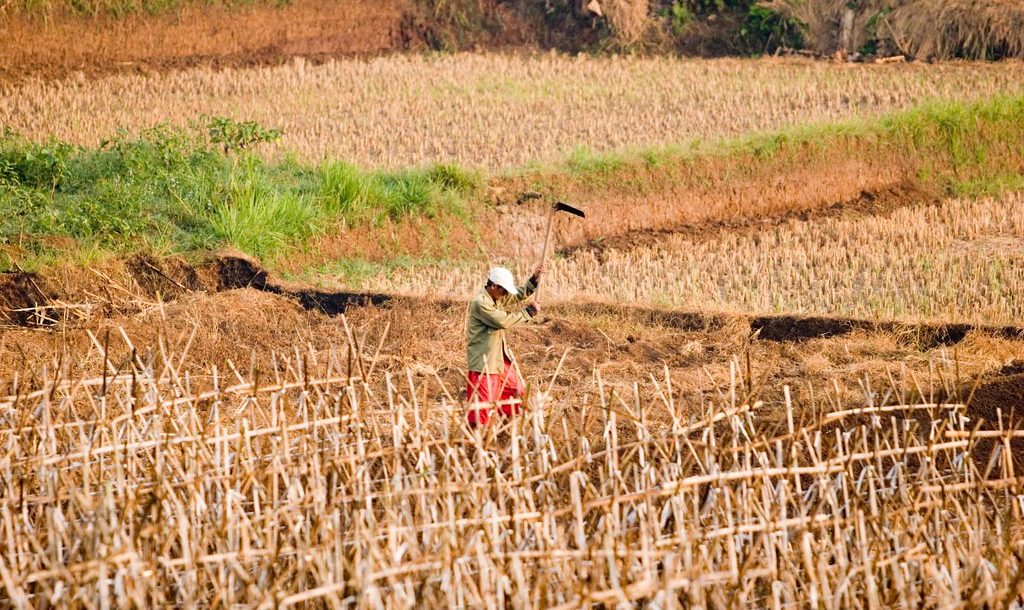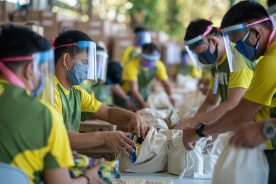In June 2020, the Indonesian government responded to fears of a COVID-19 food crisis by establishing a new plan. At first, the program aimed to develop new food estates in peatlands, where President Soeharto had carved out the one million hectares PLG Food Estate Program in 1996. Suharto’s PLG program aimed to produce large quantities of rice, increasing Indonesia’s self-sufficiency, but the peatlands went up in flames, without attaining high rice yields. To this day, re-occurrence of peat fires in this damaged peat ecosystem persist.
By September 2020, the food estate plan expanded to include Papua, Nusa Tenggara Timur, and South Sumatra. President Jokowi had allocated 7.3 billion USD for this program for 2021 alone, a significant budget even exceeding the cost of averting world famine problem recently announced by UN World Food Program. The strategy involved converting forest to “Forest Areas for Food Security” (Kawasan Hutan untuk Ketahanan Pangan, KHKP) (MoEF 2020). Does the program address current food security problems and help steer Indonesians toward healthy diets? In a recent publication, we consider the implications of this program.
The lost opportunity: Megadiverse country with a dietary problem
Indonesia is a megadiverse country with a multitude of micronutrient-rich foods. Yet, government-supported and commercial farming focuses on just a few high-value and high-yielding crops. This strategy limits the variety of food available in the market, leaving hundreds of edible and nutritious species underutilized. Today, rural people are eating less diverse diets. The 2013 Indonesia Basic Health Survey by the Ministry of Health shows that 46 percent of Indonesian children aged 6–23 months fail to attain minimum dietary diversity, with diets low in protein and vitamins, but high in carbohydrates. Although the country has become the tenth largest economy globally and made enormous progress in reducing poverty in recent years, progress towards achieving international nutrition targets remains slow.
Over 30 percent of children under the age of five are stunted or of low height for their age, indicating chronic undernutrition. Levels of overweight and obese adults increased from 19 percent to 35 percent between 2007 and 2018. Indonesia is one of largest countries facing severe double burden of malnutrition, a simultaneous manifestation of both undernutrition and obesity. Increased consumption of ultra-processed foods and sugar-sweetened beverages has contributed to growing non-communicable diseases like stroke, diabetes, and hypertension. This poor performance in health and nutritional outcomes coincides with problems of environmental degradation, e.g., air and water pollution, loss of wildlife, and deforestation, which are largely a consequence of food production practices. The rapid expansion of commercial agriculture has resulted in unsustainable food production.
Programs to address food security in Indonesia tend to be fragmented and disconnected from nutrition programs. For example, the enormously expensive food estate programs are at odds with two national regulations that aim to reduce rice consumption and promote diversify diets.
Furthermore, there is much less focus on preventive measures to integrate more environmentally sustainable solutions to food security and nutrition problems compared with, for example, curative measures to micronutrient deficiencies, such as fortification of salt with iodine, wheat with iron, and palm oil with vitamin A. Programs should instead incorporate traditional Indonesian foods rooted in Indonesia’s nature and biodiversity, which, if consumed more would improve both nutrition and local food systems.
COVID-19 and food insecurity in Metro Manila: a slow moving disaster
Residents were consulted and active in food distribution activities run by non-governmental organisations, but not consulted in relation to government-run activities.
Consequences of the rice-focused policies
In the early years of independence, President Soekarno, Indonesia’s first President, viewed self-sufficiency in rice production as critical to national security and efforts to avert famine. Rice policy initially focused on four imported and two Indonesian-bred rice varieties (Cisadane and Krueng Aceh). Yet Indonesia had more than 8,000 local rice varieties across the archipelago. Rice, like other species, varies in terms of nutrient composition across types. Limiting production to only fast-growing and high-yielding varieties can reduce nutritional diversity, contributing to micronutrient deficiency.
Scientists have noted that concentrating on just a few varieties reduces resilience, increasing vulnerabilities to pest resistance, disease outbreaks, and climate change. Yet, self-sufficiency ideologies still guide food estate policy today. Critics question the suitability of food estate programs in areas that failed under previous food estate programs. Although the program now attempts to use agroforestry approaches, the technical documents covering grand design with exact locations and plans for each area are yet to be made publicly available. Meanwhile, the implementation of food estate projects has already started. Human rights and environmental activists raise various concerns, including the exclusion of local and indigenous communities to access and use land they previously acquire food and livelihood, due to food estate use. Moreover, the latest 2021 flood has provoked more questions on the negative impact of such a large-scale program. Ecosystems damaged by land conversion for food estates can create multiple losses for local communities that will last for generations.
If not food estates, what will improve Indonesia’s food and nutrition security?
Current food estate plans are clearly an unsuitable solution for Indonesia’s food security and nutrition problems. Food estates are costly and fail to value the application of ecological principles, especially local agroecological practices rooted in local communities. Indonesia’s food policy could focus on delivering healthy and diverse diets and supporting local healthy food systems that are environmentally sustainable. Promoting more rice production undermines these objectives. Multiple studies have suggested the reduction of rice and also sugar consumption.
Research on the impact of the Covid-19 pandemic on Indonesian food systems indicates that enhancement of food supplies through added value, market diversification, and improved management through local food practices may provide a buffer against external shocks. These findings align with the local stakeholders’ perspective voiced in the “food systems dialogues” conducted by the Indonesian government and independently by various organisations. Here, stakeholders expressed their aspirations to boost traditional and local food production, consumption, distribution, marketing, and value chain efficiency.
Focusing on locally-based food systems could enable people to regain power over their food systems, deliver healthy diets, restore the environment, and assist vulnerable people across the archipelago. That is the kind of food policy that will help achieve the food and nutrition security critically needed in Indonesia.
 Facebook
Facebook  Twitter
Twitter  Soundcloud
Soundcloud  Youtube
Youtube  Rss
Rss 



